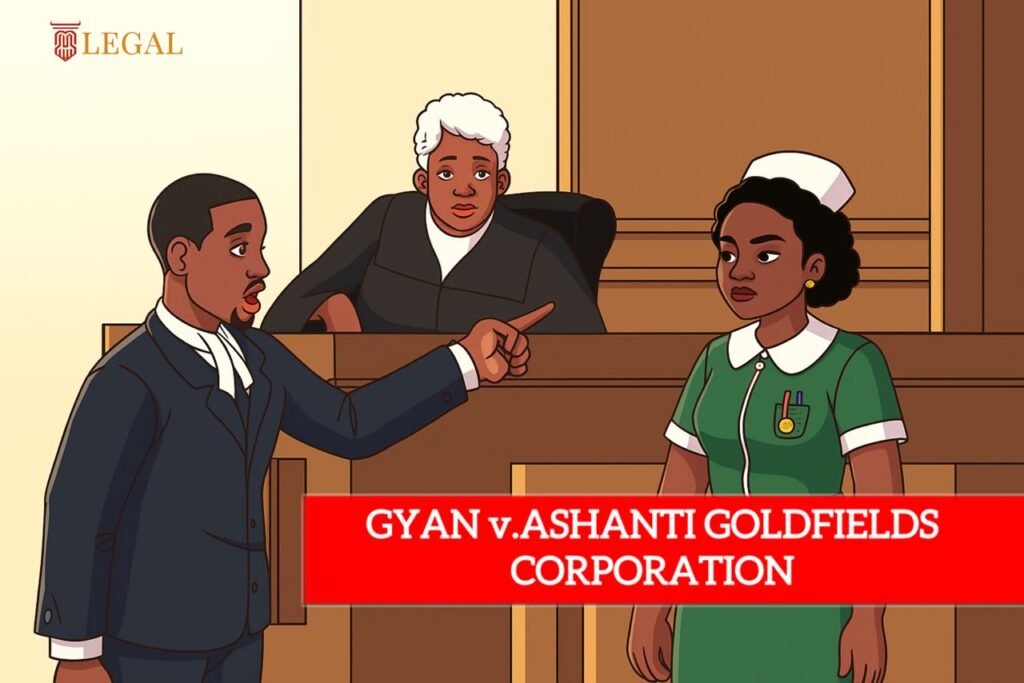
Published October 29,2025
Court of Appeal · [1991] 1 GLR 466 · 31 May 1990 · Ghana
Facts:
The plaintiff, a child represented by a next friend, sued Ashanti Goldfields Corporation for personal injuries allegedly caused by the negligence of its medical staff. On 11 May 1976, the infant plaintiff, suffering from fever, was treated with a chloroquine injection at the defendants’ hospital in Obuasi. Shortly afterward, he developed paralysis in his right leg. He later underwent surgery, which allegedly worsened his condition. The plaintiff claimed the nurse failed to follow proper medical procedures and that both the injection and the surgery were negligently administered.
Issues:
- Whether the nurse who administered the injection acted negligently.
- Whether the paralysis was caused by the injection and/or negligent treatment.
- Whether the plaintiff was entitled to damages for medical negligence.
Holding:
Majority (Essiem JA, Ampiah JA) with Ofori-Boateng JA dissenting:
- The Court held that the plaintiff failed to prove negligence on the part of the nurse or the hospital.
- It was established that the nurse’s diagnosis of malaria and subsequent treatment with chloroquine was reasonable under the circumstances, especially considering the high incidence of malaria in the tropics and the lack of resources to test for polio.
- The Court emphasized that no established medical procedures were shown to have been breached and that a responsible body of medical professionals would have acted similarly.
Implications of the Decision:
- Reaffirms the standard of care expected in medical negligence cases. That is the standard of an ordinarily competent professional in their field.
- Highlights the evidentiary burden in negligence claims -plaintiffs must prove the specific breach of duty and its causal link to the harm suffered.
Significant Quote:
“When a plaintiff pleads negligence against a defendant, he cannot succeed in a court of law if he does not substantiate by credible evidence the allegations of negligence upon which his claim is based.”
“Let me say that I have not arrived at my conclusion without some very serious reflections on the plight of this unfortunate plaintiff. He has my full sympathy but like the trial judge, I hold that sympathy is not a basis upon which a plaintiff should succeed in a court of law. Indeed, to do so will lead to a complete negation of one’s judicial oath to do justice without fear or favour, ill-will or affection.”
– Essiem JA
Commentary/Insight:
The decision reflects a foundational principle in tort law – claims of negligence must be proven by credible evidence, not presumed through sympathy or unfortunate outcomes. Justice Essiem’s remarks underscore the essential role of courts in upholding legal standards, even in emotionally compelling circumstances. He acknowledged the tragedy of the plaintiff’s paralysis but held firmly that “sympathy is not a basis upon which a plaintiff should succeed in a court of law.”
This case also raises a broader and important tension in medical negligence law: the need to balance the rights of patients to safe, competent, and standard medical care against the need to protect healthcare professionals from frivolous or speculative litigation. That balance is crucial for maintaining trust in both the legal and medical systems.
If courts were to impose liability merely because a medical outcome was unfortunate -without sufficient proof of negligence- it could encourage defensive medicine, where doctors practice overly cautious or unnecessary treatments to shield themselves from potential lawsuits. Such practices can strain healthcare systems, increase costs, and, ironically, compromise patient care.











